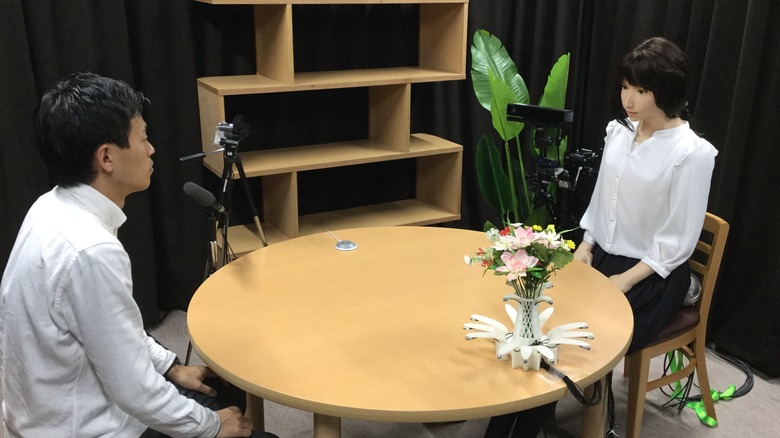Scientists Are Teaching Robots When And How To Laugh Like A Human
AI can accomplish unimaginably complex tasks. From predicting protein folding patterns and writing poetry to beating the best minds on the planet at games like chess, the possibilities are seemingly endless. However, it can also fail miserably at even the most basic tasks and feels alien, all because it lacks the human touch. Scientists at Kyoto University are trying to overcome that hurdle by focusing their efforts on teaching an AI how to sense when it should laugh while talking to a human, according to Frontiers.
The team created what they call a shared-laughter model that allows an AI program to detect human laughter and then join in on the laughter in that shared moment. AI programs lack the nuances of human conversations like puns and hidden jokes, but training them to master the entirety of these subtleties using natural language processing is no easy task. On top of that, there is a wide range of types of laughter, from sympathetic chuckles to snorting hysterics, each appropriate for a specific kind of conversation and occasion.
To get over the challenges, scientists devised an approach called shared laughter prediction. In a nutshell, an AI system would respond with empathetic laughter when it detects that the human it is chatting with is laughing during the conversation. Out of the three models tested, shared laughter yielded the best results in achieving a more natural and chatty tone. Interestingly, the system was trained with chat cues that people use during social gatherings as they try speed dating icebreakers.
Joining in laughter is just easier
The target language was Japanese and the shared laughter system was developed with the humanoid robot called Erica in mind. Erica is an Android that made headlines for its so-called beautiful looks and method acting chops that landed her a lead role in a $70 million sci-fi film. As part of the latest research, Erica sat with a human subject and emulated a speed dating scenario, with all conversations lasting roughly 10 to 15 minutes.
Each conversation was annotated — complete with the laughter — and was then fed into a system to create a custom model. It starts with laughter detection and then moves to the shared laughter prediction part. This is where the system decides if it should laugh or not. If the answer is affirmative, the AI model will next decide which laughter type to pick between a mirthful laugh and a social chuckle. Published in the "Frontiers in Robotics and AI" journal, the research paper concludes that "the perception of shared laughter is influenced by the scenario and type of laugh used and emphasize the importance of proper empathetic laughs."
The team is now hoping that the underlying framework is experimented with using more languages than just Japanese and with a bigger sample dataset to improve robot-human interactions. The research is promising, but Kyoto University professor Dr. Koji Inoue still believes that it might take another decade or two before "we can finally have a casual chat with a robot like we would with a friend."
